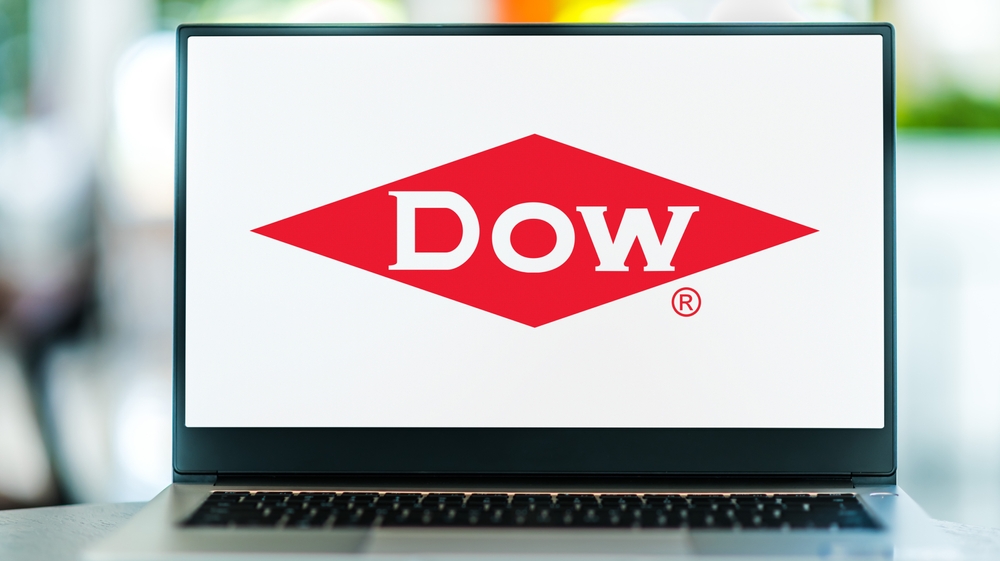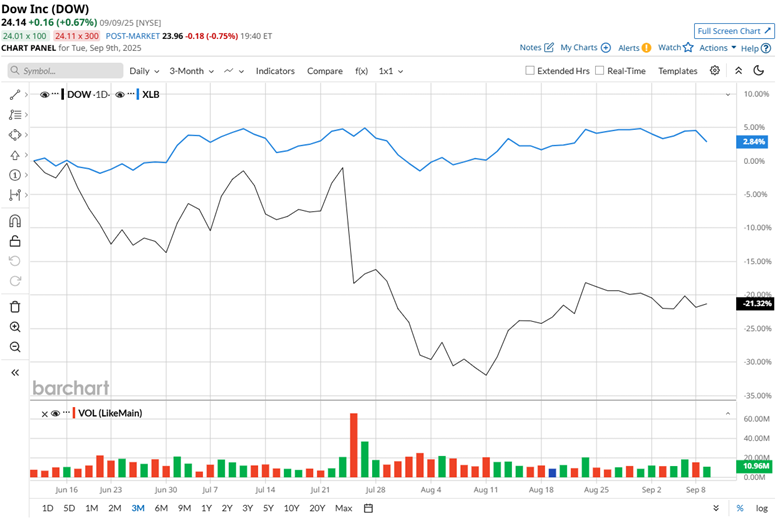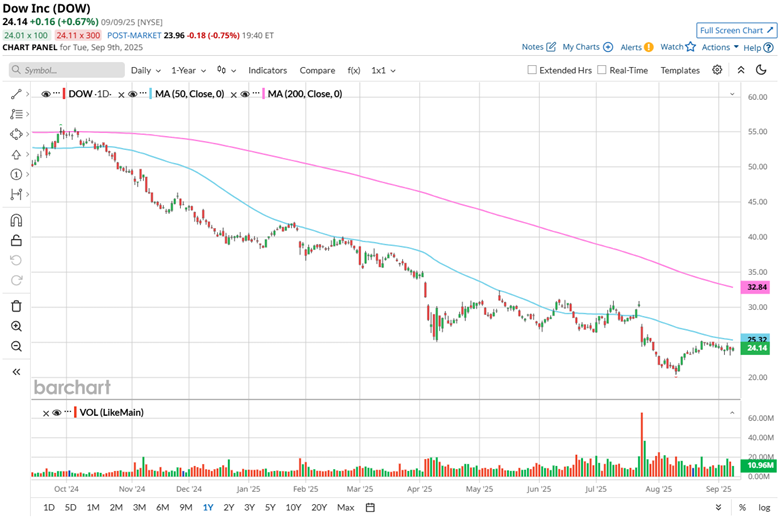
Based in Midland, Michigan, Dow Inc. (DOW) provides materials science solutions, spanning Packaging & Specialty Plastics, Industrial Intermediates & Infrastructure, and Performance Materials & Coatings. Its product line features polymers, polyurethanes, construction chemicals, coatings, adhesives, elastomers, acrylics, and more.
With a market capitalization hovering around $17 billion, Dow firmly stands in the “large-cap” category. Its global manufacturing footprint, with sites in major regions, positions it favorably against competitors and underscores its substantial market reach.
Despite the scale, DOW stock has faced significant headwinds. Its shares currently trade roughly 56.6% below their September 2024 high of $55.67. In the past three months, the stock has fallen nearly 17.9%, while the Materials Select Sector SPDR Fund (XLB) eked out a modest gain of 2.5%.

Looking over a broader horizon, Dow has retreated 52.9% in the past 52 weeks, and year-to-date, it has plunged by 39.9%. By comparison, XLB has seen a minor pullback over the same 52-week period while gaining 7.6% in 2025.
The stock’s muted momentum is evident, having traded consistently below both its 50-day moving average of $25.32 and 200-day moving average of $32.84 since late October 2024, without any meaningful recovery above either threshold.

The headwinds became unmistakable on July 24, when Dow unveiled its second-quarter fiscal 2025 results that fell short of expectations. DOW shares witnessed an intra-day dip of 17.5% as the top line fell 7.4% year over year to $10.10 billion, reflecting declines in all operating segments. The figure came in below Wall Street’s $10.25 billion estimate.
Net losses mounted to $801 million, compared to a profit of $458 million in the previous year’s quarter. Adjusted loss per share stood at $0.42, despite analysts anticipating a smaller loss of $0.12 per share. In the prior year’s period, the company reported an adjusted EPS of $0.68.
Compounding investor concerns, the company announced a 50% cut in its quarterly dividend, lowering distributions from $0.70 to $0.35 per share. Before the reduction, Dow’s stock carried a dividend yield of 9.22%, one of the highest on Wall Street, while the new payout brings the yield down to roughly 5%.
However, relative to peers, Dow’s decline appears moderate. Its rival Celanese Corporation (CE) has fallen 62.9% over the past 52 weeks and 35.4% year-to-date, highlighting that while DOW has struggled, it has maintained some resilience within the materials sector.
In light of the recent setbacks and persistent weakness in price action, analysts are taking a cautious stance on Dow’s long-term prospects. The stock has received a consensus rating of “Hold” from the 20 analysts in coverage, with the mean price target of $28.11 reflecting a premium of 16.2% from current levels.







